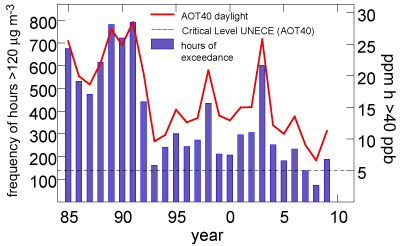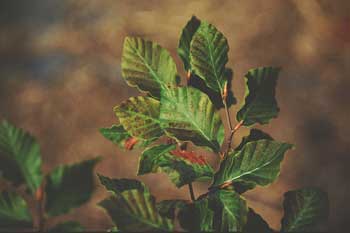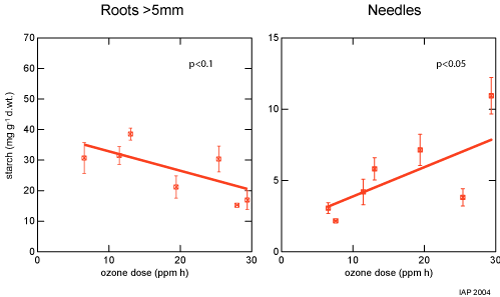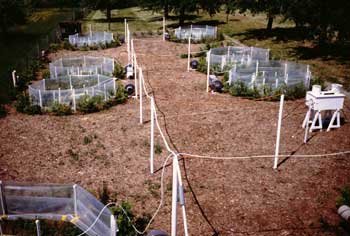The ozone load is clearly higher than the critical level of 5 ppm h > 40 ppb for the forest. Consequences for the trees are visible injuries, an reduced growth and an impaired carbon allocation to the roots.


Bronze type discoloration of beech as a consequence of ozone.

